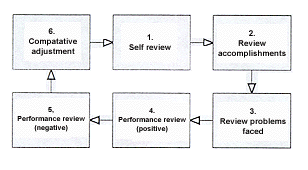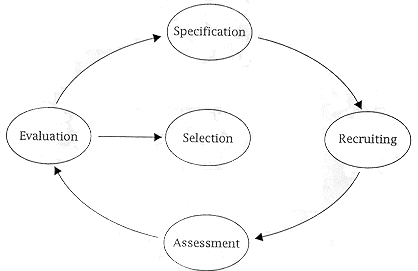| 5. | (a)
With the aid of a fully-labelled diagram, identify and
explain the different stages of the recruitment process. |
[4] |
The different
stages of the recruitment process:
one mark for each stage, one mark for a correct diagram |
||
| (b) Explain the difference
between a job specification and a job description. |
[2] | |
| A job
description explains what an employee is to do in the prospective position (1 mark). A
job specification explains the qualifications or experience that an applicant must
possess to perform the job duties successfully (1 mark).
|
||
| (c) In recruiting a
suitable-qualified individual for a specific position, we may wish to consider the
following factors, amongst others: |
||
| (i) the equipment,
machinery, or tools used |
||
| the
equipment, machinery, or tools used: job description, it explains what the employee
will do (1 mark) |
||
| (ii) the suggested level of education |
||
| the
suggested level of education: job specification, it is about the kind of employee
that is required (1 mark) |
||
| (iii) the types of specialist skills required |
||
| the types
of specialist skills required: job specification, as it explains what the employee
will need in order to do the job, but not what the job is about (or both, if it explains
something about the job itself at the same time) either answer, briefly explained:
(1 mark) |
||
| (iv) the level of responsibility
given |
||
| the level
of responsibility given: job description, as it explains about the job itself (or
both, as it might lead to a requirement on previous work experience) either answer,
briefly explained: (1 mark) |
||
| (v) the extent of initiative
required |
[5] | |
| the
extent of initiative required: job description, as it explains about the job itself
(or both, as it might lead to a requirement on previous work experience) either answer,
briefly explained: (1 mark)a few words of brief explanation should be included with each
answer; no explanation = no marks
For each factor, explain whether you would expect it to contribute to the job description, to the job specification, or to both.
|
||
(d) Once recruited, staff
would be required to undergo regular reviews. With the aid of a diagram, outline a typical
review process, explaining each step of the process carefully. |
[7] | |
The review process:
one mark for each step that has been properly explained; no explanation = no mark; total six marks 
one mark for the diagram.
|
